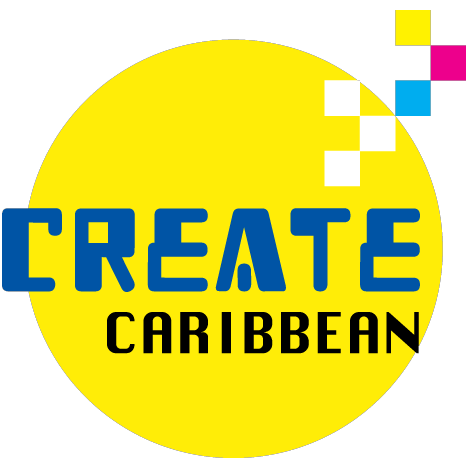Annotated Bibliography MLA
Bisnauth, Dale. “History of Religions In The Caribbean.” Africa World Press & The Red Sea Press. N.p., n.d. Web. 14 Mar. 2017. This book expounds on the religious aspects pertaining to the various beliefs of the Africans and later native Afro- Caribbean people. It includes the religious history of the Caribbean prior to, during and after slavery.
Catron, John. “Across The Great Water: Religion And Diaspora In The Black Atlantic.” Dissertation. University of Florida, 2008. Web. This dissertation mainly focuses on the religions of the Afro- Caribbean people in the mid- eighteenth century. This report encompasses the converted spiritual beliefs of the Africans which as a result shaped the nineteenth century.
Clyde, David F. Two Centuries of HealthCare in Dominica. New Delhi: Prem Printing, Print. In this book the author describes health care in Dominica in the past. Although health care was not not as developed and he describes how it was in those ages and the challenges faced.
Crask, Paul. Dominica. Chalfont St. Peter: Bradt Travel Guides, 2016. Print. – Paul Crask’s book Dominica touches on each aspect of the island’s culture, heritage and much more. There is specific content about religion and science, throughout the book more information can be found about these topics especially the religious beliefs.
Didier, Micheal. 2017,. – Mr. Michael Didier was a long-standing Operations Manager at Dominica Banana Marketing Cooperation (DBMC). Notably, he made contributions to books such as ‘Survival by Association: Supply Management Landscapes of the Eastern Caribbean’ and other banana production-related texts.
Edmonds, Ennis, and Michelle Gonzalez. Caribbean Religious History. NYU Press, 2010. Project MUSE. Web. 14 Mar. 2017. This book by Edmonds and Gonzalez details the various religions present in the Caribbean. The diversity of religions range from Amerindian beliefs to European Christianity to African based religions like Rastafarianism etc.
Eugene, Ph.D. Hermancia. 2017 ,. – Dr. Hermancia Eugene has a PhD. in Molecular Virology Biology. She is a professor at the Dominica State College and possessed notable research skills.
Golob, Peter, Graham Farrell, John E. Orchard, Rick Hodges, and Debbie Rees. Crop Post-harvest. Science and Technology: Principles and Practice. N.p.: n.p., 2002. Print. – This book dives into how technology is used in Dominica to help the farmers produce their crops. It states the biological needs of harvesting and how it plays a major role in the agriculture sector.
Leung, Joyce. The Encyclopedia of Caribbean Religions: Volume 1: A-L; Volume 2: M-Z. Ed. Patrick Taylor, Frederick I. Case, and Sean Meighoo. University of Illinois Press, 2013. JSTOR. Web. 14 Mar. 2017. – This book focuses exclusively on the religious beliefs and rituals exercised in the various Caribbean islands throughout slavery etc.
.Lauwyck, Bernard. “DOMINICA’S BEAUTIFUL CHURCHES AND CHAPELS.” DOMINICA’S BEAUTIFUL CHURCHES AND CHAPELS. N.p., n.d. Web. 14 Mar. 2017. <https://dioceser.wordpress.com/> This article focuses on the churches/ chapels of the Catholic churches in Dominica and their history’s. It states the parishes of Dominica and how they have developed of the years.
Malzaire, Bp. Gabriel. 2017,. – His Lordship, Bishop Gabriel Malzaire, has been the ordained Bishop of the Commonwealth of Dominica for 15 years. Although he is St. Lucian by birth, he is knowledgeable of a significant portion of Dominica’s religious history.
Md, Stephen Berger. Infectious Diseases of Dominica. Place of publication not identified: Gideon Informatics Inc, n.d. Print. – In this book Stephen Berger provides a detailed list of all the infectious diseases diagnosed in Dominica. Among that detailed list includes diseases predominantly known to Dominica along with the agent, vector, symptoms and more.
Sammy, Dennis, Karen Eckert and Errol Harris. 2008. Action Plan for a Sea Turtle Conservation and Tourism Initiative in the Commonwealth of Dominica. Prepared by the Wider Caribbean Sea Turtle Conservation Network (WIDECAST), in partnership with Nature Seekers and the Dominica Sea Turtle Conservation Organization (DomSeTCO), with funding from the United States Agency for International Development, Roseau, Commonwealth of Dominica. 59 PP. – This action plan provides access to scientific research based in Dominica on turtles as well as their conservation. The plan is forwards as a local community based assessment while being an ecotourism endeavor.
Wiley, James. “Dominica, Grenada, And The NTAE Imperative”. vol 25, 1999, JSTOR, https://www.jstor.org/stable/25765876?search=yes&resultItemClick=true&searchText=dominic a+agriculture&searchUri=%2Faction%2FdoBasicSearch%3Fso%3Drel%26amp%3Bwc%3Don%26amp%3BQuery%3Ddominica%252Bagriculture%26amp%3Bprq%3Dscience%252Bdominica%26amp%3Bfc%3Doff%26amp%3Bhp%3D25%26amp%3Bacc%3Doff&seq=1#page_scan_tab_contents. – This is a journal article. This research article focuses on Dominica and Grenada’s efforts to diversify their agricultural exports during a time when competition for similar crops is increasing.
Zamore, Wayne. “China Aid Agriculture Technical Cooperation Project Description.” Division of Agriculture. N.p., n.d. Web. 14 Mar. 2017 <http://divisionofagriculture.gov.dm/programmes/china-aid-agricultural-technical-cooperation-project/112-china-aid-agricultural-technical-cooperation-project-description> This website breaks down the agriculture sector in Dominica as an economic activity and its projects. It relates technology to agriculture and it is used to improve Dominica.
